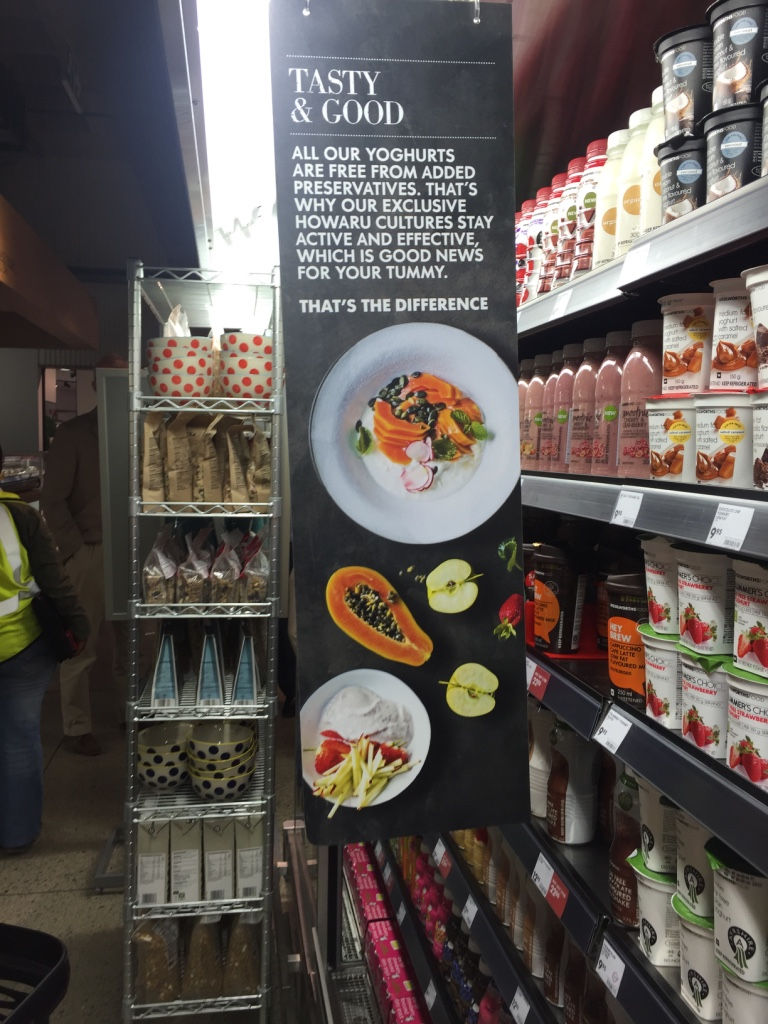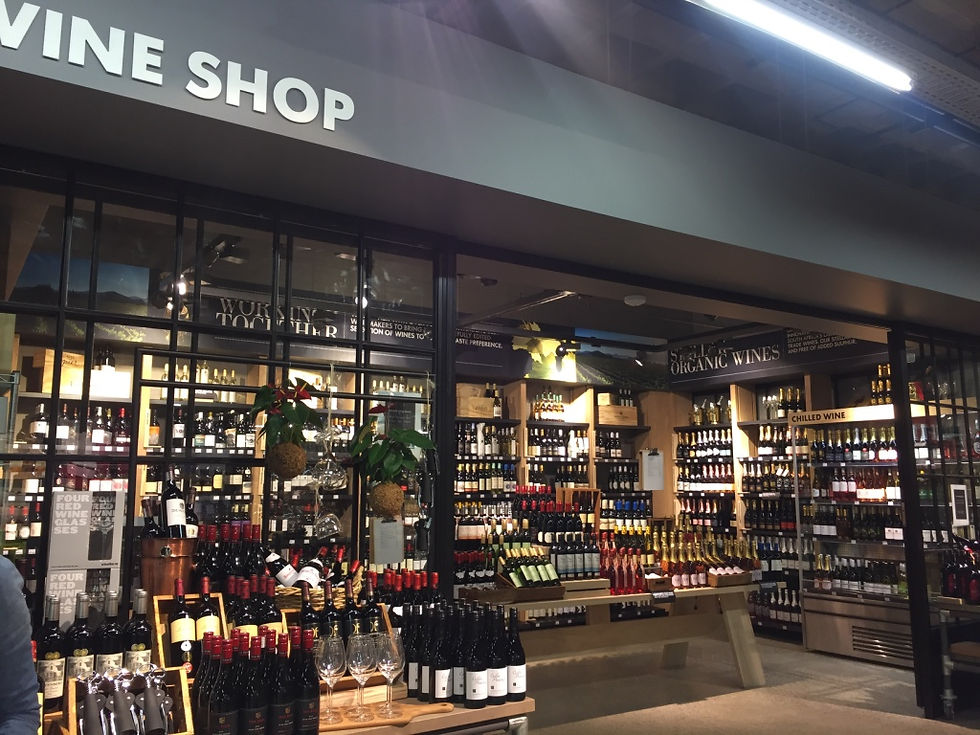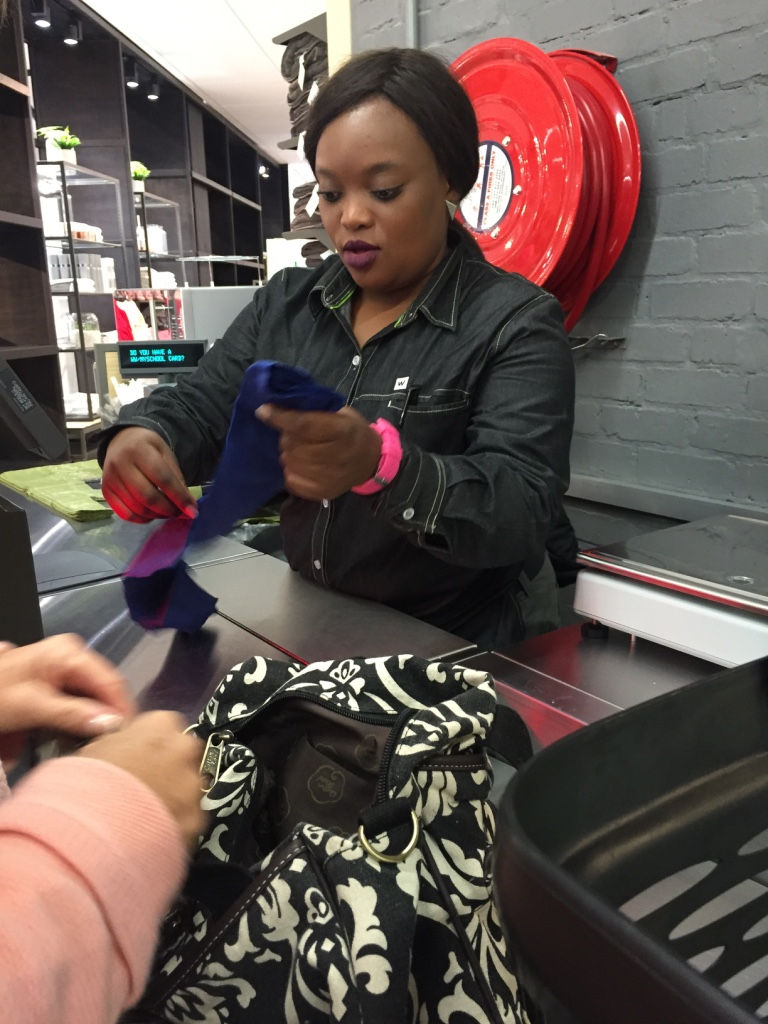Stepping into Woolworths
- Laura Vietti
- Oct 2, 2016
- 9 min read

Who is Woolworths?
Woolworths South Africa is a “retailer dedicated to bringing you quality, style and value for the past 80 years” (Woolworths, 2016). Over that time Woolworths has been devoted to living its brand essence- ‘the difference’ (Woolworths Holdings Limited, 2013). “The brand essence represents a central theme of the brand vision” (Aaker, 2014, p.1). Woolworths’ brand essence is a concise representation of how they treat the touch points between them and their consumers, “they give us direction and guide our behavior, actions and choices” (Woolworths, 2016). Their mission is “to be the first choice for consumers who care about value, innovation and sustainability in the southern hemisphere” (Woolworths Holdings Limited, 2015, p10).
Brand Contact Audit
Brand Contact Inventory
The brand contact inventory is the first step of conducting a Brand Contact Audit. This step consists of collating all points of contact between the brand and the consumer. By completing this step one is able to identify when, how and why consumers come into contact with the brand and when, how and why the brand comes into contact with the consumer (Klopper, HB and North, E, 2015). These points include product and service touch points, and planned and unplanned touch points.
Even with the necessary resources the process of collating this list of contact points is time consuming therefore I will only be considering the touch points I experience in my personal journey. In Brand Management written by Klopper and North, it mentions that, the strategic planner must not be familiar with the brand and its consumers. Past experiences could influence their current journey, because they might focus on touch points with preconceived opinions or only collect data from touch points they are familiar with (Klopper, HB and North, E, 2015). For these reasons I decided to experience the new Woolworths store at the Mall Of Africa and I will be focusing only on the contact points found from this journey. I have visited many Woolworths store on countless occasions but I have never visited this one. I will be experiencing this store with an open mind in order to attain accuracy in this project.
Below are the contact points I have identified throughout my journey. They have been categorised by product, service, planned and unplanned touch point.
Products
David Jones display (see figure 4)
Cheese display (see figure 7)
Wine Shop (see figure 13)
Wellness Shop (see figure 14)
Kitchen display (see figure 11)
Service
Biodegradable germ fighting wipes (see figure 5)
Cashier (see figure 15)
Security Guard
Attendants in store
What’s Cooking in-store kitchen (see figure 8)
Our Butcher in store (see figure 9)
Our Bakery and Our Kitchen in store (see figure 10)
Planned
New 3D display outside of the store (see figure 1)
TV display outside of the store (see figure 2)
Studio.W display (see figure 3)
Instagram page (see figure 16)
Recycling, quality and innovation messages in-store (In-store advertising) (see figure 6)
Unplanned
Long queue with unoccupied tills (see figure 12)
Friendly but unhelpful attendant in-store
Primary Brand Contact Patterns
The next step of the Brand Contact Audit is identifying the primary brand contact patterns. This step requires outside in and systemic thinking in order to explain the reasons for patterns. Gary Barlett defines Systemic Thinking as “finding repeat patterns or common themes across a system or situation” (Bartlett, G., 2001). These patterns emerge in a systemic manner from the Brand Contact Inventory (Klopper, HB and North, E, 2015).
Below, in chronological order, I will be listing the touch points I experience in my journey through Woolworths. In addition I will be discussing some of the points that had the most profound impact on me.
The touch points experienced are:
Instagram (see figure 16)
New 3D display outside of the store (see figure 1)
TV display outside of the store (see figure 2)
Studio.W display (see figure 3)
David Jones display (see figure 4)
Biodegradable germ fighting wipes (see figure 5)
Recycling message at trollies (In-store advertising) (see figure 6.1)
Cheese display (see figure 7)
Friendly but unhelpful attendant in-store
Food message- Yogurt (In-store advertising) (see figure 6.3)
What’s Cooking in-store kitchen (see figure 8)
Food message- Meat (In-store advertising) (see figure 6.4)
Wine Shop (see figure 13)
Our Butcher in-store (see figure 9)
Our Bakery and Our Kitchen in-store (see figure 10)
Kitchen display (see figure 11)
Long queue with unoccupied tills (see figure 12)
Wellness Shop (see figure 14)
Message at tills (In-store advertising) (see figure 6.2)
Cashier (see figure 15)
A few of the above points stood out to me in my journey. I felt as if these particular points allowed the brand to differentiate itself from the rest and deliver on its brand promise that is unique to Woolworths – ‘the difference’.
The New 3D Display
I have visited many Woolworths' stores in the past and what was uniquely different about this one was the newly introduced 3D display (see figure 1). The clean exterior of Woolworths allowed this display to stand out visually. At first I thought this display was of a beautiful forest, however on closer inspection is emphasised a serious issue that Woolworths has been trying to highlight – the need to recycle. On the window it says that the whole display is 100% recycled. I thought this was an interesting way for Woolworths to highlight this issue – it is a way of advertising that has not been seen before by Woolworths with a result that it created even more of an impact.
The Studio.W Display
I have never seen any other clothing store, let alone Woolworths create such an impactful display. I felt as if I was oversees, seeing everything on a greater scale (see figure 3). I thought this display, not only made me want to see the Studio.W collection, but it emphasized Woolworths’ constant desire for innovation. The display was perfectly set up and because of the display the whole store resonated quality as I walked in.
Friendly yet unhelpful attendant
Personally I find the in store help I receive one of the most impactful touch points between the brand and myself. Therefore I was a little disappointed when I asked about a brand of muesli that was no longer on the self and she was unable to answer me. Instead of her seeking help from another attendant, she simply walked away without making any additional efforts. I felt as if Woolworths would be the brand who would go above and beyond to help their customers, however it seemed as if it where any other food store.
Long queue with unoccupied tills
All in all, my journey through Woolworths was very pleasant although to finish it off with a long queue was not enjoyable. What made it more frustrating was seeing that half of the tills where unoccupied. Additional cashiers at the tills would easily alleviate the congestion. I find the happenings that I experience at the end of my journey always have the most profound impact. I began this journey being convinced along the way that Woolworths was an innovative brand who strives for quality, but ended up feeling that they still couldn’t perfect simple tasks like making the check out queue more efficient and convenient. I would definitely have expected Woolworths, a brand who in know for their innovation, to find a solution for a common problem like this.
Brand Contact Audit
Now that the Primary Brand Contact Pattern has been completed, the most influential points need to be identified. Below is an audit of eleven points that I identified as being the most important.

First and Last Contact Points
My first contact point that I experienced was Woolworths’ Instagram page. Any posts from the brand are planned forms of contact points, which aim to specifically communicate the brands promise. All posts resemble not only the visual and verbal communication style, but also add value to the lives of people. They do this by recommending food recipes, or clothing styles and by reminding you of in store promotions and holidays, such as Mothers Day. They do not refer to recycling us much as they do in store.
The last contact point I experienced was the interaction with the cashier. Unfortunately by this time the long queue had made me forget about all the positive contact points I had experienced along my journey. Therefore I was more prone to noticing negative facts from this point onwards. The cashier didn’t seem very friendly as we arrived at the till, however by the time we had left she had warmed up to us. In the end the cashier had lightened my mood slightly, leaving me with an all round all right experience.
Brand Contact Cohesion
My journey began while scrolling through their Instagram page. It let me know that a new retailer was opening in the Mall Of Africa and filled me in on all the amazing specials and promotions happening in store (see figure 16). This made me want to visit the store. Upon arrival, it was clear that they emphasized a different message – recycling. From the 3D display outside the entrance (see Figure 1) to the ‘Save the planet in your sleep’ message above the bed linin (see Figure 6.5), it all contributed to a consistent message for customers to see in store. As stated in Brand Management, Klopper et al. states that “contact points work together in the delivery of the brand promise and that the brand is experienced as credible and trustworthy” (Klopper, HB and North, E, 2015, p172). This does not mean that the message has to be exactly the same on every form of communication. I would not have been as drawn to visiting Woolworths if their Instagram page where only communicating recycling. However when I am at the store and purchasing goods, it is interesting to know how Woolworths promotes recycling.
All points of contact seamlessly communicate Woolworths’ promise, ‘the difference’ all by means of strategically planning their communication through their different touch points.
Key Challenge and Causal Loop Diagram
Throughout my journey at Woolworths, I found that everywhere I looked, every contact point linked perfectly to their brand promise. Woolworths’ messaging was executed in a subtle way that didn’t seam pushy and it was placed in perfect locations around the store for the customer to fully experience the message and not only observe it. Every point was seamless, until we paid for our items and there was a long unnecessary queue with unattended tills. I have chosen this contact point to improve, as it is one of the last contact points I experienced and therefore one of the most important. It is a simple and common issue that we all experience at shops. Even though it is not always avoidable, being able to alert attendants to occupy their tills will help relieve the situation to a certain degree.
Through feedback loops and connected nodes, a causal loop diagram is able to explain the behavior of a system (Thwink, 2014). The causal loop diagram works on the same principles at the Chaos theory, which is explained as the “small changes in initial conditions [that] could result in vast differences in the final outcome” (Chaos Theory, 2008).

Creative Strategic Solution
Woolworths was very successful in communication innovation and quality and ultimately being ‘the difference’ consumers want to see. It states in their Woolworths Holdings Limited Integrated Report of 2015 that they are a ‘customer centric business’ and that their ‘customers insights will drive and inform all of [their] business decisions” (Woolworths Holdings Limited, 2015, p.18). However the part of my journey that did not meet these expectations was the efficiency of the check out tills. There was a long, unnecessary queue with only half of the tills occupied. Understandably there is no use to have all tills occupied at all times especially when the ‘congestion’ increases and decreases throughout the day. Therefore their should be some sort of way to know if there are many people in line without having to observe the line all throughout the day. What I am proposing is a weight pad under the floor that runs along the queue (see figure 16). The pad will be able to measure how long the line is and how many people are standing in queue. In addition a wristband will be introduced that will alert all attendants on the floor that more cashiers are needed and how many (see figure 17). The attendants will press a button on their wristband that will alert others that they will occupy a till and when the necessary amount of people have taken their required posts the alert will disappear. This will help seamlessly elevate any congestion at the tills and not have their consumers end their pleasant journey on a negative note. By putting this system in place it will help the brand live its promise and brand essence, being ‘the difference’ and being an innovative, quality driven brand.
Conclusion
To conclude I would say that Woolworths has effectively used their contact points between them and their consumers to communicate their brand promise. A small adjustment at the tills will ensure a consistent and pleasant experience for their consumers, which will allow Woolworths to be ‘the difference’ their consumer’s value.
(Figure 1 - 3D display)

(Figure 2 - TV display)

(Figure 3 – Studio.W display)

(Figure 4 – David Jones display)

(Figure 5 – Biodegradable Germ Fighting Wipes)

(Figure 6 – In-store advertising)





(Figure 7 – Cheese display)


(Figure 8 – In-store advertising)

(Figure 9 – Our Butcher)

(Figure 10 – Our Bakery and Our Kitchen)

(Figure 11 – Kitchen Display)

(Figure 12 – Long queue)

(Figure 13 – Wine Shop)

(Figure 14 – Our wellness Shop)

(Figure 15 – Cashier)

(Figure 16 – Instagram Page)

(Figure 17 – Floor plan of check out tills)

(Figure 18 – Till Alert Wristband)

References
Aaker, D. (2014) It Starts With A Brand Vision. [Online] Prophet. Available from: https://www.prophet.com/blog/aakeronbrands/185-it-starts-with-a-brand-vision [Accessed 02/04/16].
Bartlett, G. 2001. Systemic thinking: a simple thinking technique for gaining systemic focus. The International Conference on Thinking Breakthroughs, 2001.
Chaos Theory. (2008) [Video] OGNIANK. Unknown.
Klopper, HB and North, E (2015) Brand Management. 4th impression. Cape Town: Pearson.
Woolworths (2016) Our Values. [Online] Woolworths South Africa. Available from: http://www.woolworths.co.za/store/fragments/corporate/corporate-index.jsp?content=../five-ways/fiveWays&contentId=cmp204259 [Accessed 09/05/16].
Woolworths Holdings Limited (2013) Woolworths Holdings Limited. [Online PDF] WHL. Available from: http://www.woolworthsholdings.co.za/whl_mini_2014/pdf/whl_fact_sheet.pdf [Accessed 09/05/16].
Woolworths Holdings Limited (2015) Woolworths Holding Limited. [Online PDF] WHL, Available from: http://www.woolworthsholdings.co.za/investor/annual_reports/ar2015/whl_2015_integrated_report.pdf [Accessed 10/05/16].
Thwink (2014) Causal Loop Diagram (CLD). [Online] thwink.org. Available from: http://www.thwink.org/sustain/glossary/CausalLoopDiagram.htm [Accessed 09/05/16].








Comments